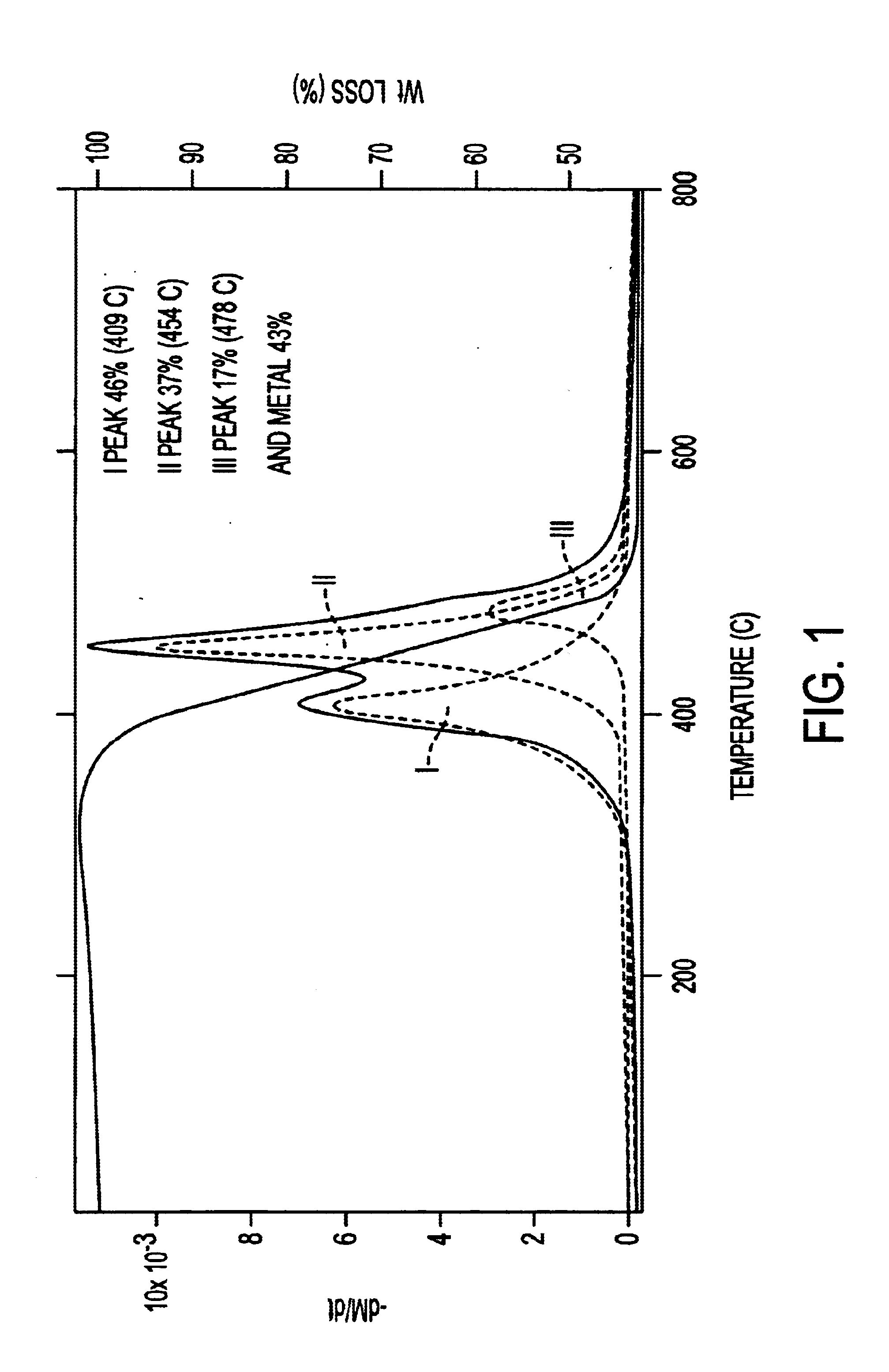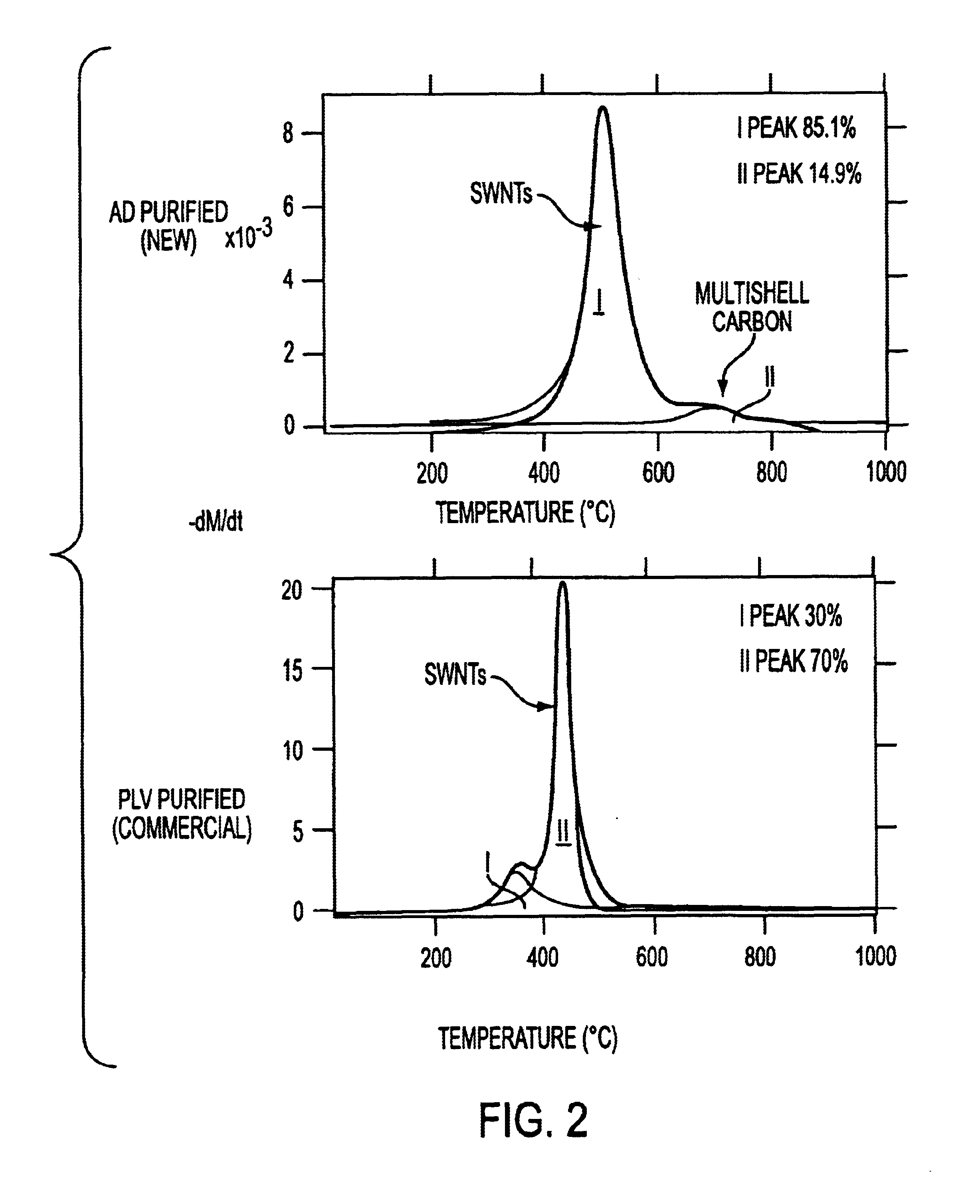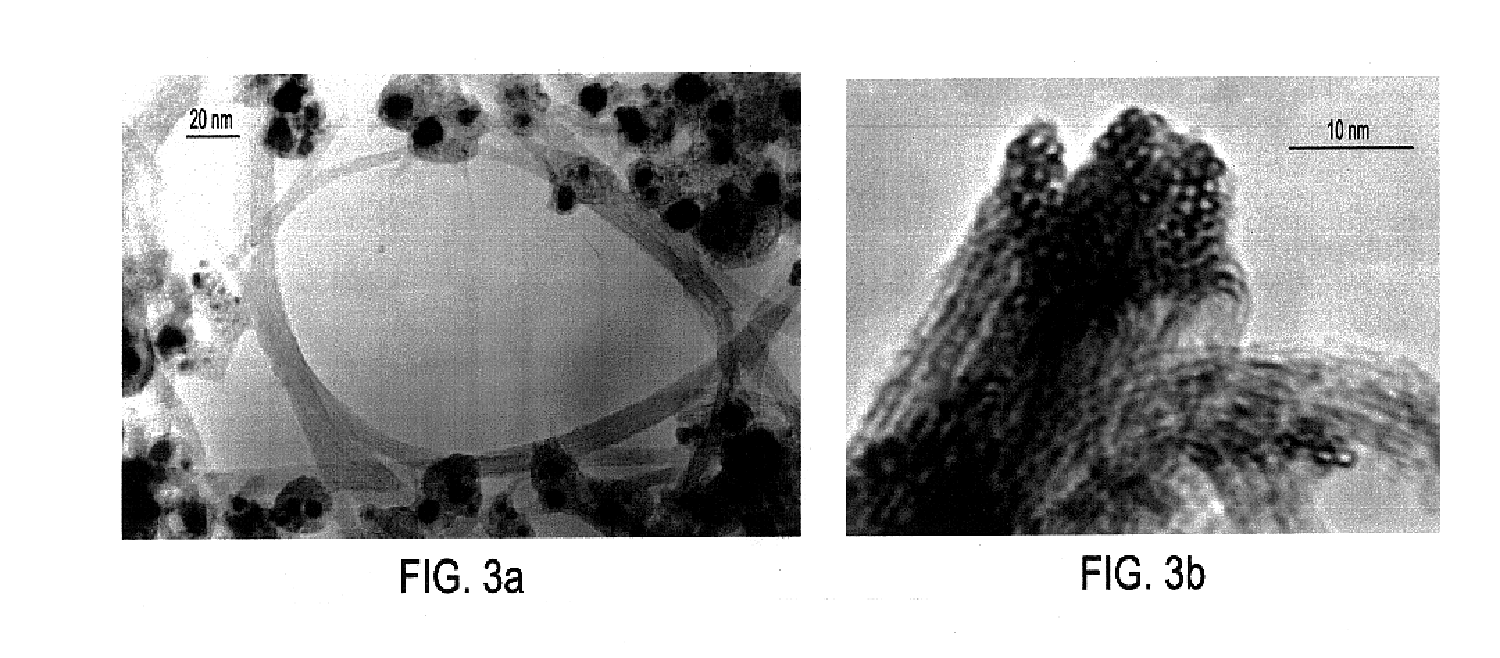Purification of carbon filaments and their use in storing hydrogen
a carbon filament and hydrogen storage technology, applied in the direction of single-walled nanotubes, chemistry apparatus and processes, textiles and paper, etc., to achieve the effect of high yield, and reducing the amount of amorphous carbon impurities
- Summary
- Abstract
- Description
- Claims
- Application Information
AI Technical Summary
Benefits of technology
Problems solved by technology
Method used
Image
Examples
examples
[0034]The raw soots produced by AD were prepared as described earlier (C. Journet et al., Nature vol 388, pp 756) and received as dry powders from Carbolex, Inc. of Lexington, Ky. Chemical analysis of these soots were carried out by temperature programmed oxidation (TPO) using a TG-50 Mettler thermogravimetric analyzer (TGA). The TGA reaction conditions included a 5° C. / min heating rate starting from about 25 C. and ending at about 1000° C. under a flow of dry air at about 100 sccm. From the first derivative of the TPO curve, or the DTPO curve, the preferential oxidation temperatures of the different phases of carbon in these soots were determined, as described below.
[0035]For purification, raw SWNT soot was selectively oxidized under conditions defined by the TPO results. The soot was then refluxed in hydrochloric acid (HCl) using standard Pyrex glassware for a few hours, and the suspension was then filtered through a polycarbonate membrane filter (pore size=1 μm, available from Co...
PUM
| Property | Measurement | Unit |
|---|---|---|
| temperature | aaaaa | aaaaa |
| temperature | aaaaa | aaaaa |
| temperature | aaaaa | aaaaa |
Abstract
Description
Claims
Application Information
 Login to View More
Login to View More - R&D
- Intellectual Property
- Life Sciences
- Materials
- Tech Scout
- Unparalleled Data Quality
- Higher Quality Content
- 60% Fewer Hallucinations
Browse by: Latest US Patents, China's latest patents, Technical Efficacy Thesaurus, Application Domain, Technology Topic, Popular Technical Reports.
© 2025 PatSnap. All rights reserved.Legal|Privacy policy|Modern Slavery Act Transparency Statement|Sitemap|About US| Contact US: help@patsnap.com



